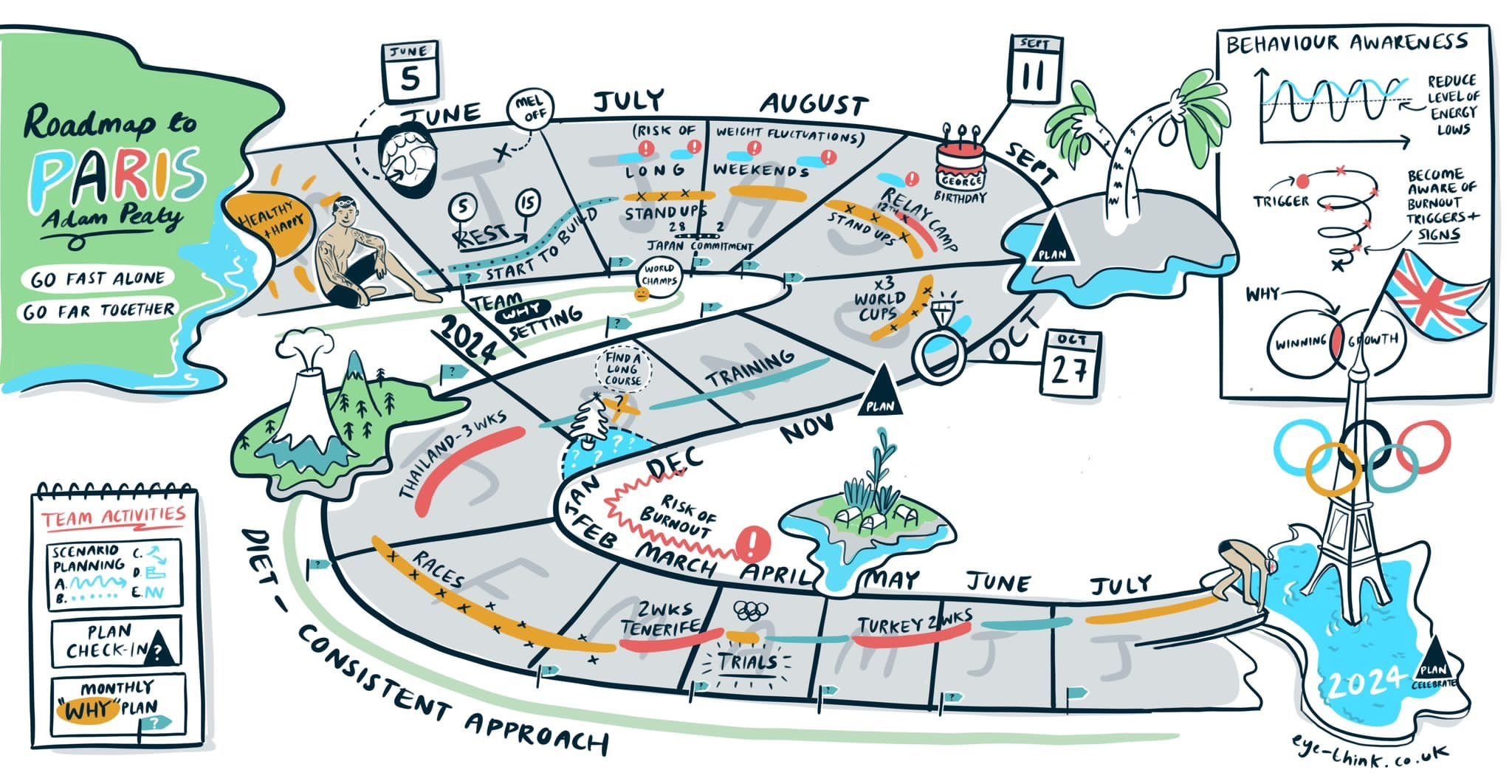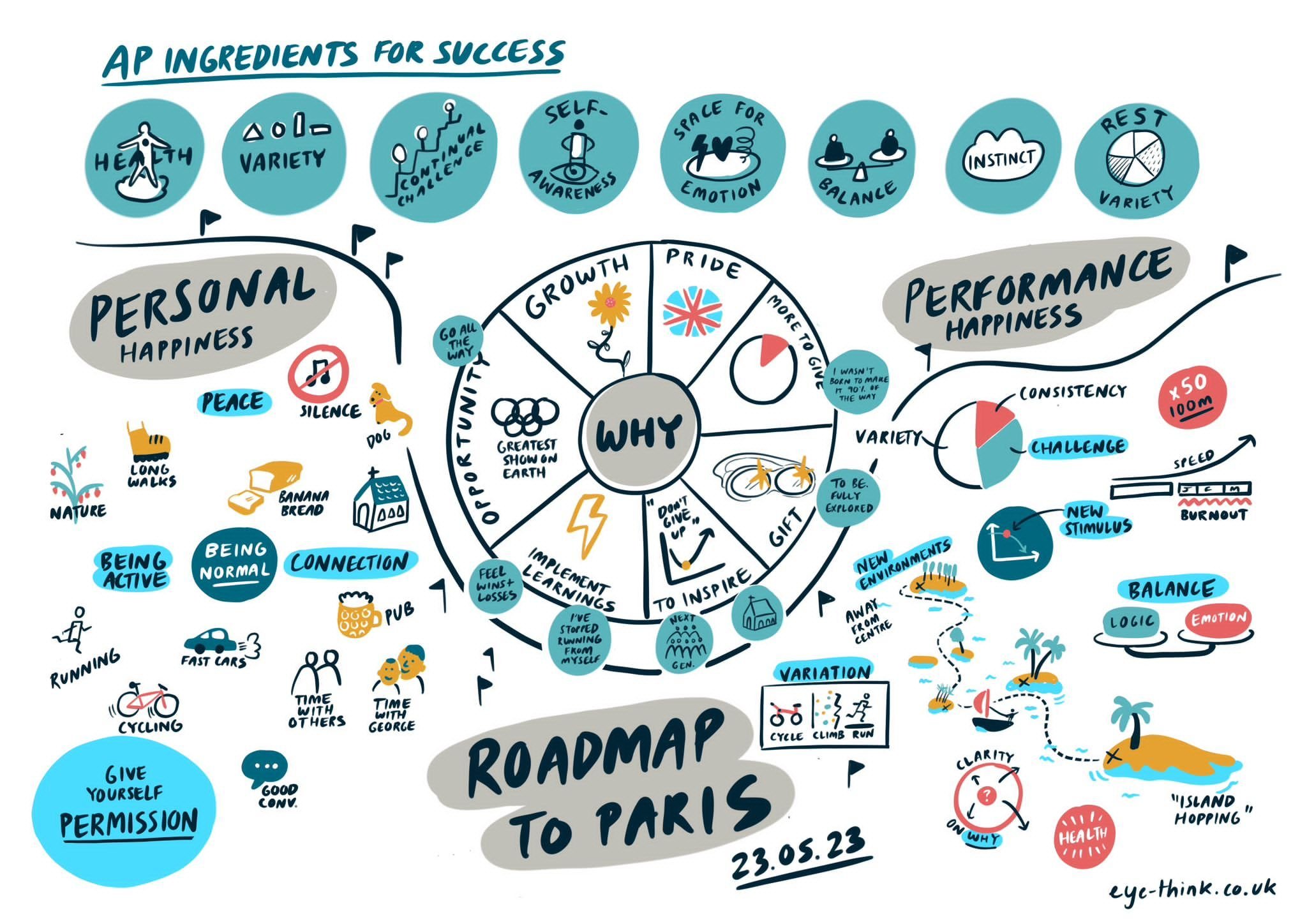How three-time Olympic champion Adam Peaty plans for pressure – and builds real resilience
Isabel Infantes / Alamy Stock Photo. An emotional Adam Peaty after winning silver for Team GB in the men’s 100m breaststroke final at Paris 2024.
Olympic champion Adam Peaty is widely considered one of the greatest swimmers of all time. The British breaststroke specialist has completely transformed his events, shattering 14 world records and securing three Olympic gold medals.
But what really sets Peaty apart isn’t just his physical prowess – it’s his mental approach to performance. He’s been open about the psychological strategies that helped him bounce back from setbacks, including a rare loss at the 2022 Commonwealth Games, to return to the podium in Paris 2024. His willingness to share the mental tools he uses gives us a rare, behind-the-scenes look at the mindset of a true champion.


After Paris 2024, where he won silver in the men’s 100m breaststroke, Peaty shared two visual roadmaps on LinkedIn that helped guide his preparation over the 12 months leading up to the Games. Here are five key takeaways from those roadmaps that go beyond sport and can be applied to anyone looking to build mental resilience.
1 . Proactive, not reactive
Peaty’s roadmaps show that he doesn’t just plan for the good times – he also gets ready for the tough ones. He knows that the stretch from December to March tends to be mentally and physically draining, so instead of waiting for burnout to hit, he puts support systems in place ahead of time.
“Knowing that December to March is notoriously punishing, we just made sure that the team communicated much more often to avoid losing margins to illness, injury, stagnant environments and lack of inspiration,” he explained.
This flips the usual idea of resilience on its head. It’s not just about bouncing back after things go wrong – it’s about noticing the warning signs early and putting steps in place to stop things from falling apart in the first place. For Peaty, that means using visual markers to flag high-risk periods and take early action rather than scrambling to recover later.
No matter your field, looking ahead and planning for the rough patches – before you hit them – can make a huge difference.
2 . Balancing the athlete and the human
What really stands out in Peaty’s approach is how clearly he values both his performance and his personal wellbeing. In his second roadmap, he puts “Performance Happiness” and “Personal Happiness” side by side – treating them as equally important.
“When we talk about constantly operating at a high level, we always assume that it has to come from the performance side of our personality, when in reality, we must also have our personal happiness,” he wrote.
One note that jumps out is: “Give yourself permission.” It’s a powerful reminder, especially for high-achievers who often feel guilty for taking time out or doing things that don’t seem “productive.” But Peaty gets it – your personal life isn’t a distraction from success, it’s part of what fuels it.
True resilience isn’t about going all-in on one part of your life. You want to find a rhythm where your goals and your happiness support each other – so you can go the distance without burning out.
“When we talk about constantly operating at a high level, we always assume that it has to come from the performance side of our personality, when in reality, we must also have our personal happiness”
3 . Staying connected to your why
At the heart of Peaty’s second roadmap is one simple but powerful word: why. It sits right in the centre, showing how purpose is the thing that holds everything else together.
“That is my WHY in the middle because everything I do and everything I am relies on it,” he said.
Having that sense of purpose makes a big difference when things get tough. It’s what helps him push through those intense training days or moments when motivation dips. Instead of feeling like he’s suffering for nothing, remembering his why gives it all meaning – it becomes a sacrifice with a purpose.
If you’re trying to build more resilience, this is a great reminder to get clear on your own why, and to come back to it often. When things get hard, having that deeper reason in mind can help make the struggle feel worth it.
4 . Monitoring subtle shifts
In Peaty’s first roadmap, there’s a “Behaviour Awareness” section that’s all about spotting the early signs of burnout and keeping track of energy highs and lows. By staying tuned in to how he’s thinking and feeling, he’s able to catch red flags before they turn into real problems.
This kind of self-awareness highlights how important it is to keep an eye on your own patterns, especially the ones that might lead to trouble. Instead of pushing through until something breaks, Peaty pays attention to the small changes in his mindset that could be early signs of burnout.
For anyone in a high-pressure role, it’s a reminder that having your own system for tracking mood, energy, and mental health can make a big difference. By checking in with yourself regularly, you’re more likely to catch issues early – before they spiral into something bigger.
“Without those personal things which gave me rest, clarity but also creativity, I wouldn’t have been performing at a high level more than a few weeks/months”
5 . Comprehensive recovery strategies
In both roadmaps, Peaty talks about using a mix of recovery methods: physical, social, and creative. What keeps him feeling good? Simple things like walking in nature, spending time with others, and listening to music. Together, they form a solid recovery routine.
“Without those personal things which gave me rest, clarity but also creativity, I wouldn’t have been performing at a high level more than a few weeks/months,” he said.
This kind of well-rounded recovery shows that building mental resilience isn’t just about pushing through – it's also about intentionally recharging in different areas of life. Peaty’s focus on creative and social outlets suggests that real resilience comes from a variety of sources, not just one way of coping.
“Remember, before you want to quit, have a rest and look at the road both behind you and in front of you”
Success is no accident
Peaty’s roadmaps make one thing clear: resilience – and the success that comes with it – isn’t luck. It’s something you build on purpose. His way of working shows that real, lasting excellence takes more than grit. It takes planning, self-awareness, balance, and a strong sense of why.
As Peaty puts it: “Remember, before you want to quit, have a rest and look at the road both behind you and in front of you.” That mindset – zooming out when things feel heavy, and giving yourself space to recover – is a powerful one.
If you take the time to create systems that fit your own life and goals, you can build the kind of resilience that doesn’t just get you through the hard moments but helps you stay strong through entire seasons of challenge.
FEATURED STORIES






